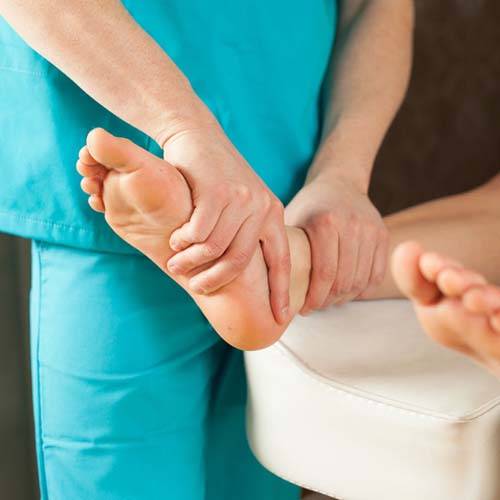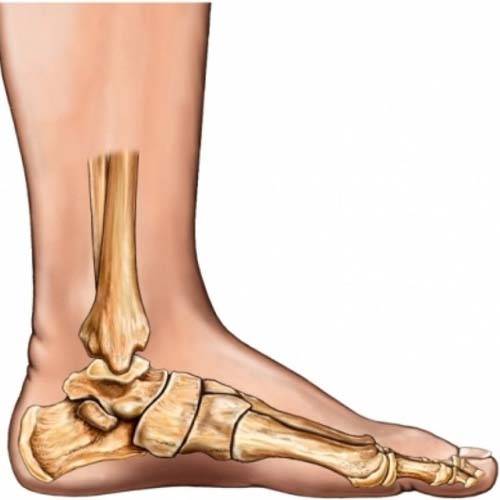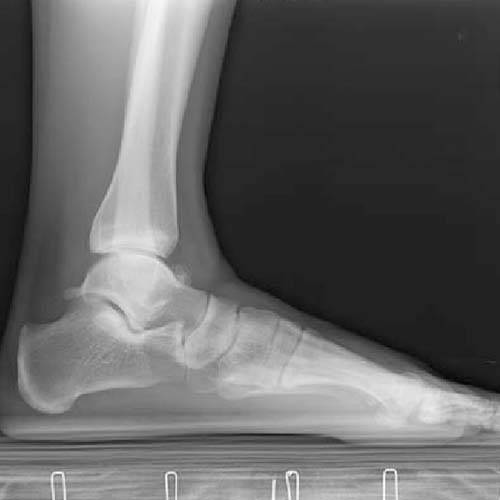
Physiotherapy for Flat Foot is done to minimize pain,strength weak muscles, patient education with focus on daily house-hold activity.
Flat feet, also referred to as flatfoot, is a condition in which one or both feet have little to no arch. When you stand, your foot pads press into the ground. In other words, it is a condition in which the entire foot from the sole to the ball of the feet touches the ground. Typically, there is no visible arch in the foot, though the arch can be seen when the foot is lifted.
At birth, all babies have flat feet. Arches typically form by the age of six. As adults, approximately two out of every ten children still have flat feet. Some adults have collapsed arches. Flatfoot is another term for this condition, fallen arches.
A very common condition, Flat Foot or Pes Planus or fallen arches is found in about 30% of the general population. An absence or reduction of the arch, which is often found between the heel and the ball of the foot, is indicative of a flat foot. Normally, both feet are affected, but a fallen arch on only one foot is possible. A variety of conditions, including injuries, obesity, and arthritis, can result in flat feet. Flat feet can also be caused by aging, genetics, and pregnancy. You are also more likely to have flat feet if you have a neurological or muscular disease like cerebral palsy, muscular dystrophy, or spina bifida. Flat feet must be properly cared for because they can cause pain, stress, and imbalances in other parts of your body. Your entire body can be aligned by making an effort to reduce flatness. This might help with various bodily problems that flat feet can bring.
Without an arch, the entire sole touches the ground, which may cause the foot to feel stretched. Both adults and children frequently do have this illness. Flat feet don't always hurt, but they can hurt when you're doing sports.
Flat feet are a congenital condition, and by the time a child is 2 or 3 years old, their arches have begun to form. Sometimes, the arch does not fully form or the arch that does form reverses, resulting in a flat foot.
Your knee, calf, legs, and perhaps even your hips are put under stress even if it may not be unpleasant at first for your feet. This is because the foot functions as a great shock absorber while the arch is there, but when it is not, the force of weight bearing is shifted to other regions of the leg.
 What are the types of flat foot?
What are the types of flat foot?
Flat feet can be divided into two categories: flexible flat feet and rigid flat feet. When the leg is not being supported by the ground, the arch of a flexible flat foot is evident; however, when the individual is standing, the arch disappears. In a rigid flat foot, there is no arch at all.
Though it might also be a genetic disposition, a flat foot can also be a sign of other illnesses, such as Down syndrome. Whatever the cause, having a flat foot can be uncomfortable—from wanting to purchase several styles of shoes to not being able to participate in certain sports without experiencing pain.

Flatfoot physiotherapy treatment can help cure and relieve the discomfort it causes. Flat foot Physiotherapy can be corrected by guiding you through a series of exercises.
At Theracure, we help you improve your flat foot by guiding you through activities, physical exercises, and stretches aimed at developing the arches of the feet.
Your physiotherapist will also advise you on other ways to improve your comfort, such as icing, insoles, etc. You can enhance your ability to walk by following to your personalized physiotherapy practice.
Services, OT Therapy Online, Get Therapy Online
There is, however, treatment to lessen the discomfort caused by the Flat Foot. One of the treatments being Physiotherapy.









